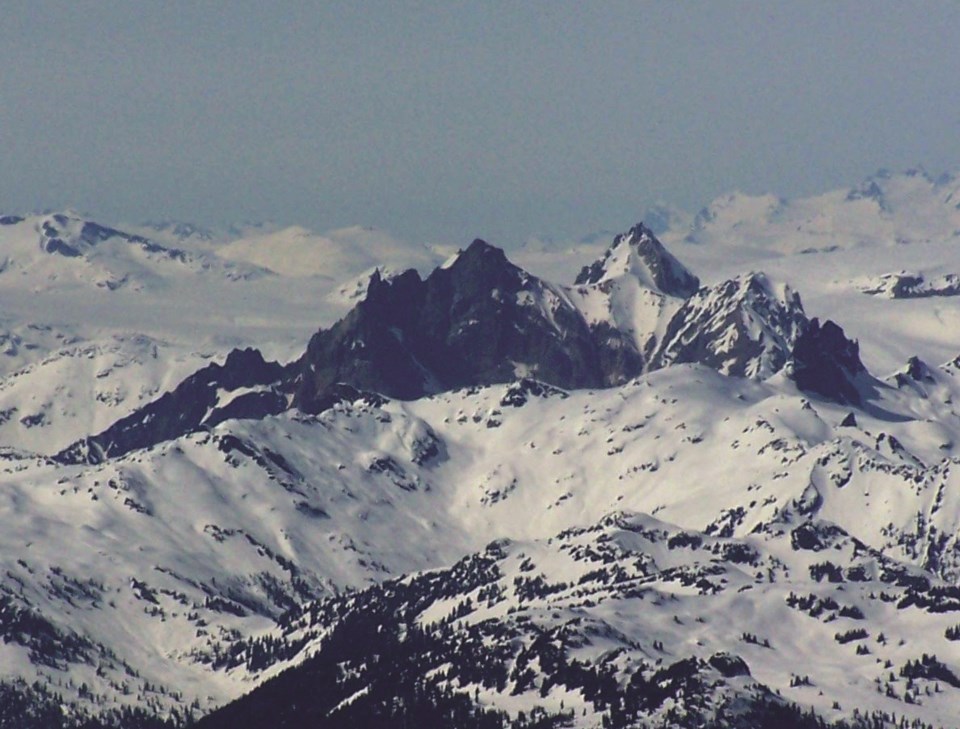Could you imagine a massive geothermal power plant just outside of Whistler? That could be a possibility, according to Geoscience BC.
A new study released April 26 examines the geology and ground temperature in the area of Mount Cayley, located about 20 kilometres west of Whistler.
“At the moment, Canada is the only country on the Pacific Rim to not produce any geothermal energy,” said Rich Truman, vice president of external relations with Geoscience BC.
“And so the Garibaldi Volcanic Belt, as it’s known, which stretches from roughly Squamish up past Pemberton and up into Chilcotin territory, is probably one of the best prospects for generating geothermal energy in B.C.”
The April 26 report summarized fieldwork that was completed in the summer of 2021. The study provides a better understanding of the stratovolcano by creating bedrock mapping and age dating of the volcanic eruption history in the area, and will be used to create a three-dimensional model of the rocks, faults, and aquifers around Mount Cayley.
The Mount Cayley research is part of the larger Garibaldi Geothermal Volcanic Belt research project, which is funded by Natural Resources Canada and Geoscience BC. The project includes researchers from several universities and support from the Lil’wat and Squamish Nations.
“The first phase released its results a year or two ago, which focused on Mount Meager near Pemberton, which really helped to pull people together and attract investment and interest in that area and at Meager Creek,” said Truman.
With that phase complete, the researchers moved south, to “what they see as one of the next best prospects for geothermal energy, and to try and better understand what’s beneath the volcanoes, to see if there’s potential for geothermal energy around Mount Cayley,” Truman added.
“They started that research last summer and worked pretty hard with the Squamish Nation to make sure that the Squamish Nation was happy with the research that was being done and that they don’t have any concerns,” he said.
“So we just released that field report and the data from that, and we’re just in planning at the moment for following up and finishing off this phase in summer 2022.”
The hope with this research, long-term, is that Canada will join with the rest of the Pacific Rim in producing geothermal power as it provides a clean, renewable source of energy. According to Natural Resources Canada, about 19 per cent of Canada’s power comes from renewable sources, with the remainder coming from fossil fuels and nuclear.
Within British Columbia, 95 per cent of power production comes from renewable sources, mainly hydroelectricity. However, expansions of the hydropower system have become increasingly controversial and costly. Geothermal power production may offer an alternative to future hydropower expansions.
“This research plays an important role as Canada seeks to develop renewable energy sources with low environmental footprints. It can guide geothermal energy producers, communities, governments, and Indigenous groups to a better understanding of the potential geothermal resource throughout the Garibaldi Volcanic Belt and beyond,” said Geoscience BC’s manager of energy and water Randy Hughes, in a release.
The research is essential to informing decisions and encouraging investment in geothermal as a renewable resource, added project lead and Geological Survey of Canada research scientist Dr. Steve Grasby, in the release.
“Baseline geoscience information about the depth, temperature and permeability of potential aquifers helps us to understand their suitability to generate geothermal heat and power,” he said.
Find more info at geosciencebc.com.



